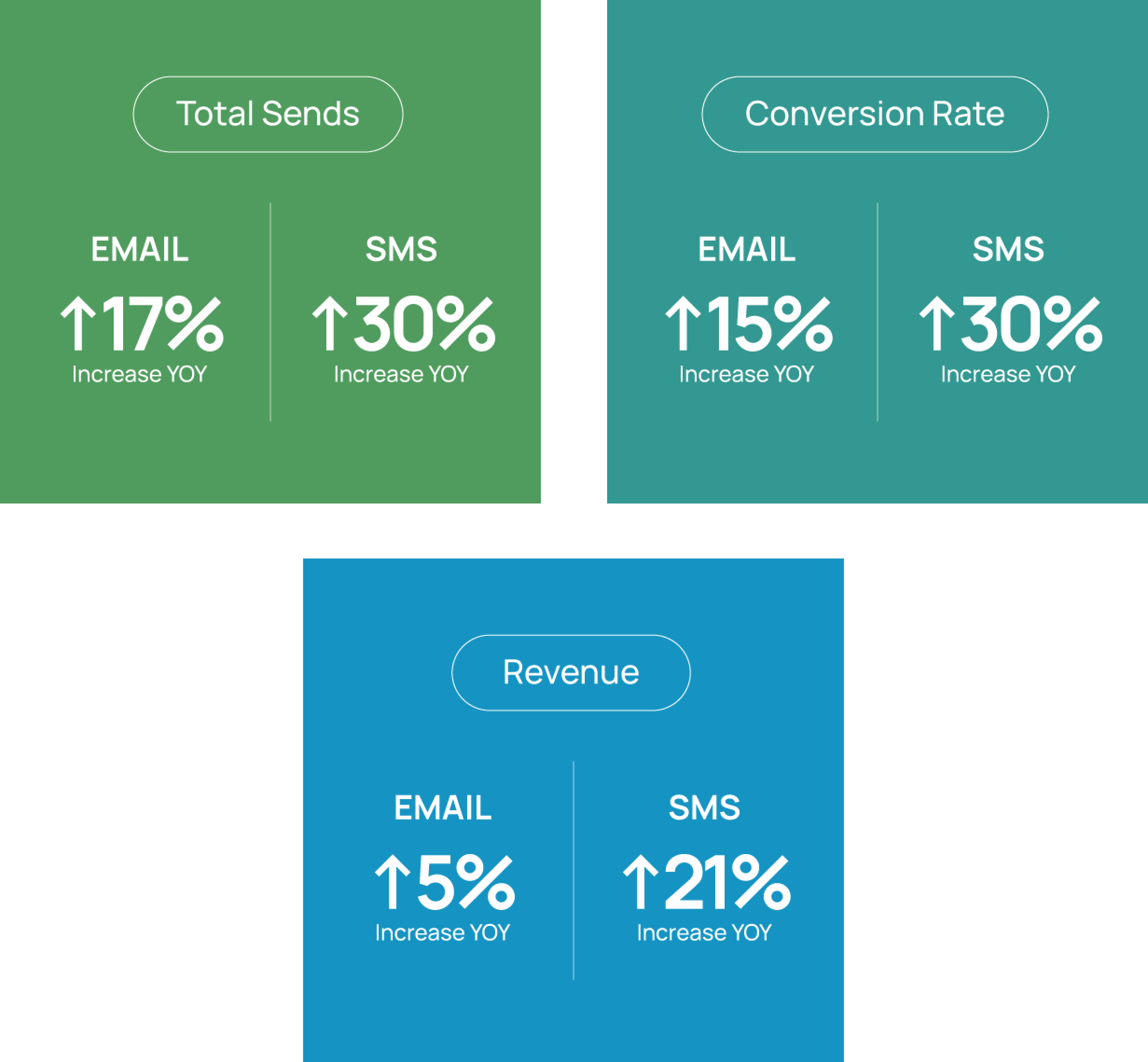Why Now is the Time to Consolidate your Digital Marketing Tools


There are literally thousands of digital marketing tools that marketers can choose and implement to execute their campaigns. Many tools work well as standalone products to accomplish individual or one-off goals. However, marketers need to think more holistically in meeting revenue, engagement, and measurement goals.
This holistic thinking comes in the form of using a single digital marketing platform versus a variety of vendors that, in theory, work together, but create gaps in understanding the full picture of maximizing your current customers, and growing future customers.
Why? As marketers design their campaigns, there are a number of inputs and responses that consumers can take and make when responding to email, text, and other targeted, 1:1 marketing messages. If these actions are managed or tracked individually, and not as part of your full canvas of marketing activity, it can lead to misunderstanding of what works, and what doesn’t, and how you allocate your spend, time, and effort.
A single digital marketing platform doesn’t need to represent a compromise of functionality or power. Rather, the right digital marketing platform can provide full, orchestrated, cross-channel communications, understanding and context of what triggers and deliverability metrics are driving sales, and confident guidance in designing future campaigns that work.
There are three key areas to consider in maximizing the execution, understanding, and measurement of marketing campaigns: Identification/Importance of Owned Channels, Deliverability/Engagement, and Attribution.
1. Identification / Importance of Owned Channels
Identity resolution isn’t a new topic to most marketers. However, it has become more important with the recent privacy changes taking place. Third-party data is rapidly becoming a banished relic in marketing. To fill that gap, retailers and brands need to focus on proactive collection of zero- and first-party data now more than ever.
So, what does this growing data need have to do with leveraging two or more disparate platforms? Well, it is possible you are missing crucial pieces of data to weave a contact’s information together, or you may be painting an entirely inaccurate picture of a contact, or subscriber.
For example, a retailer is using three different platforms: one to send broadcast emails (Vendor A), one to send behavioral triggered campaigns (i.e. cart abandonment, browse abandonment, alerts) (Vendor B), and one to send SMS messages (Vendor C).
When a subscriber clicks through a message sent from Vendor A, Vendor B likely won’t recognize this click as it will look anonymous. This subscriber would need to input their email address again during their session in order to receive the most relevant behavioral triggers. Not only is this a poor customer experience, but the retailer/brand is now potentially missing out on the opportunity to send more relevant triggers and generate more revenue.
2. Deliverability/Engagement
Using the above example, we know the behavioral triggered send from Vendor B generates the highest engagement and revenue. We also know that most marketers use an “active” segment for their broadcast sends based on opens, subscribe date, and customer information. Marketers may see their active segment shrink over time since Vendor A does not know who is opening and clicking on the emails Vendor B is sending.
Another use case revolves around inbox placement. When sending campaigns from two different vendors, marketers are missing out on the high engagement from behavioral triggers, helping broadcast sends make it safely into the Inbox.
3. Attribution
Finally, attribution has always been a hotly debated topic among marketers. If messages are sent from Vendors A, B, and C, and all vendors are working on a last click attribution, all vendors will take credit for a purchase made, thus inflating the actual revenue generated and skewing future decisions.
However, by leveraging one marketing platform, marketers can help themselves identify highest performing channels and campaigns. From one platform, you can perform data-driven marketing with confidence and clarity, and get a deeper level of cause and effect from your efforts.
Listrak’s single marketing platform gives marketers a unified view of their customer, providing an understanding of what works in a campaign and what drives engagement and sales. To see the platform 1000+ retailers and brand trust to grow their customers and revenue, schedule a demo with us.
















.svg)
































.png)

